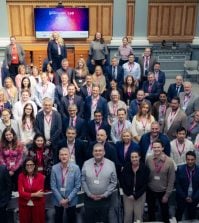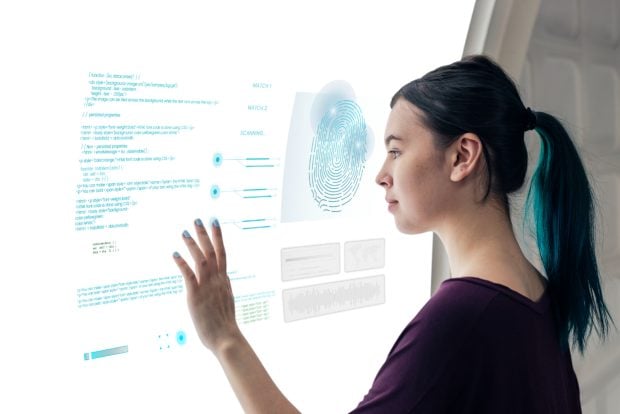The power of data in digital transformation: Inland Revenue New Zealand shares its experience

Over the last seven years, Inland Revenue New Zealand has undergone a NZ$1.3bn digital transformation programme that aimed to boost compliance, save taxpayers’ money, and improve customer experience. As the agency’s data and analytics chief Tina MacLean explains, overhauling its data processes has been key to driving change
When Inland Revenue New Zealand set out in 2014 to become an intelligence-led organisation, it didn’t do so by halves. The NZ$1.3bn (US$900m) digital transformation is what Tina MacLean describes as an “all-encompassing” change programme that – unusually for a government project – focused on “people, platform, process, and policy” simultaneously.
The aim, ultimately, was to make it easier for people and businesses to meet their tax obligations, making revenue available to fund government work, and to ensure citizens receive the social payments they are entitled to enabling them, in turn, to contribute more fully to the economy.
To do this, Inland Revenue’s (IR) strategy was to put customers at the centre of the agency’s work, improve collaboration with other parts of the tax ecosystem, and boost policy agility through reimagining its business processes and adopting digital technologies. And core to much of that was smarter use of data.
Enter Tina MacLean, who was appointed in 2018 – her previous experience was in the private sector, latterly as general manager data and analytics, at ANZ bank – to lead Inland Revenue’s data and analytics transformation.
At the heart of the change was the implementation of a data intelligence platform and quickly establishing operability of the new technology, achieved within a three-month window. However, MacLean and the team knew that it was going to take more than that to ensure adoption and a sustainable operating model for IR’s targeted ambitions. A considered outcome was IR’s ability to build standardised data products that other government agency partners could also benefit from.
The team’s first step towards achieving its goals was to consider how to shape the narrative around intelligent data use. “When I joined Inland Revenue, as with most organisations, analytics had never really been fully coordinated to create maximum value for customers,” says MacLean, who is also co-chair of the OECD Forum on Tax for Community of Practice Analytics. What was needed, therefore, was to decide “what it meant to be an intelligence-led organisation, how we could make that operable, and how we were going shape our data and analytics.”
Procuring a new platform
Central to all of the work that would follow was the procurement of a new platform – the agency’s entire technology portfolio is now ‘software as a service’ – which MacLean says “enabled us to focus on the intent, use of the capability, and identify first use cases to support business objectives, rather than becoming overly invested in technical management and bespoke tooling”.
The agency placed high expectations around the platform delivering value early and iteratively, and it didn’t disappoint, she says.
Given the transformation was wholesale across the core tax system too, the impact meant the team was tasked with managing the current work items, decommissioning the old, and improving the new. MacLean says she was lucky to have a highly competent and hardworking team to navigate the complexities.

US-based analytics software specialist SAS manages the platform, Snowflake, on Inland Revenue’s behalf. SAS’s data science and analytical tools – such as its Viya 4 product – reside on top of it, and the whole system is hosted on SAS Cloud. MacLean says Inland Revenue’s approach is one of COTS (computer-off-the-shelf), helping it to reduce costs, ensure modernity of its technologies, and allowing it to focus on delivering services to New Zealanders and government.
The tools themselves make the process of managing data and building analytical outputs and visualisations “that bit easier” and “optimise the way we can operate”, MacLean says. But more than that, it is the relationship with the company and the team behind the tools that really makes for success.
“We have a really strong partnership with SAS. Their local and global team both challenge and support us in making sure our decisions are fully thought through and we are doing the right things, and good things, with the platform.”
MacLean says when you chose to work in partnership with a supplier in the way IR has, it is important to create trust and transparency in the relationship and an environment that encourages straight talk and a sharing of knowledge and skills.
She adds: “That’s why we see them as an integral part of our broader team – arguably you could say that someone coming into the organisation wouldn’t know who was Inland Revenue and who was SAS because we work in a very integrated way.”
Embracing change
The platform is the beating heart of Inland Revenue’s data analytics work but to optimise the analytical insights that could be derived from it, its people had to learn to work in a completely different way.
MacLean explains that there is often a mentality that an analytics unit exists to service demand requests. But that arguably, in a digital services organisation, data analytics become part of the fabric and operation of the business system. “We had to take a step change in how we presented ourselves to the organisation and how the wider organisation consumed the new services.”
This meant encouraging people to challenge previously accepted norms, adopt new processes, and for some to step out of their comfort zone into a more challenging set of conversations, as well as tasks.
“On the positive side it gave many of our thought leaders and ambitious folk the opportunity to excel, learn new skills and be recognised for it,” MacLean says. “On the other hand, as is the norm with large change and new faces, there was resistance as we encouraged the breaking down of siloes and standing up of team work and integrated approaches.”
Communicating the change that needed to happen meant going back to basics. “It was a case of recognising that we needed to build from a new set of foundations but that we would be a better team and organisation for it.”
MacLean explains that IR tried to make the process of change as inclusive as possible so that the team felt empowered to help shape their future.
Nevertheless it wasn’t for everybody. “Some chose to leave the organisation to further their own ambitions. For the most part it was the right decision for them and their careers. The turnover certainly has made for challenging times, but I am super proud of the team we have today and the cohesion we continue to build. We have some big ambitions and a long road ahead to achieve them but we are in a good place – I think we have a reasonable cadence and operating rhythm now.”
Much greater visibility over compliance
The team’s work is already paying dividends. MacLean points to the ‘bright line’ property rule whereby sales of residential property under certain conditions are liable to taxation.
As the bright-line population is not static with new customers being subject to the rules each year, IR has an annual cycle of interventions in place. This phased approach starts from broad based marketing activities promoting general awareness, followed by more targeted compliance activities including audit activity.
The cycle of interventions is designed to shift compliance by ensuring customers have the information needed as early as possible to ensure they can get it right from the start.
“With the power of the data intelligence platform, we are able to bring together the data, tools and analytics that better identify specific attributes and risks and apply the right intervention type to the customer’s circumstances at the right time,” MacLean says.
This has allowed IR to scale its interactions with customers from one-to-one manual review to a one-to-many approach. Customers who are considered a higher risk are also more easily identified and can be sent straight to the audit process.

Moreover, the agency has greater visibility of tax compliance in general. Te Pae ki Anamata is a Māori phrase which loosely translates as ‘a place from where decisions can be made that support a future focus state’. Under that moniker, IR is building new and somewhat experimental capability that combines a view of the entire population’s overall compliance with that of their customer experience across a number of measures – for example, revenue at risk or movement over time.
“Through a combination of the smarts of the extended team, the platform grunt and advanced analytics capability, we have designed a sustainable architecture that underpins a strategic blueprint about customer behaviours and allows us to explore causations, correlations and predictions of customer participation in the tax and social policy system. In turn, we can better choose where to expend our efforts to support customers, and improve processes and/or policy to help customers get it right from the start,” MacLean explains.
“It’s early days but we can already see some exciting opportunities to integrate how we embed this view into IRs everyday way of working.”
Accelerating cross-government data sharing
Inland Revenue has also made strides towards hitting one of the key goals of the overarching digital transformation investment – that of enabling other agencies to benefit from IR’s investments.
“We continue to explore opportunities that support other government organisations,” MacLean says. “That could be as simple as sharing some of our technical expertise and learning, to provisioning access to certain parts of the IR platform for alternate use. These are an ongoing part of our cross-agency conversations and ensuring the investments benefit the wider government system wherever possible.”
She says she would love to think that each agency could have, at least to some degree, a standardised platform architecture that would create interconnectivity but “that’s probably a bit of an audacious goal right now”.
COVID the catalyst
The COVID-19 pandemic prompted greater sharing of data between New Zealand government agencies, and MacLean says there “was a realisation that some of the things we told ourselves we couldn’t do, or would ordinarily take much longer, we actually could do”.
One example was data sharing to facilitate people receiving government support packages during the crisis within hours of applying. IR and the Ministry of Social Development worked at pace together to put in place the appropriate paperwork to view the relevant IR transactional data, and verify the customer’s application. In turn the analytics team utilised the opportunity to build improvements in fraud detection as part of the new scheme.
A key success factor was IR’s transition to the modern technology to support delivery of services and analytical insights in a fast and responsive manner.
“Had we not been through that transition and got some of our core tax products onto that new system, literally months before COVID hit, we wouldn’t have been able to do half of what was required during the pandemic,” MacLean says.

and to share it, “without actually having to lift and shift it”. Photo by Tima Miroshnichenko via Pexels
She says government agencies are not resting on their laurels and are working hard to build a data strategy that focuses on how they can collect, hold, share, and distribute data “in a much more architected way”.
Inland Revenue’s data and analytics team has come a long way since it set out, three years ago, to completely reimagine how it operated as part of the agency’s wider digital transformation. It laid the foundations of what it set out to do: enabled improvements in decision-making to improve compliance; contributed to improvements in the customer experience; and changed people’s perceptions of what the analytics and insights team do and how it can be utilised to meet business goals. There is more still to achieve but the lessons it has learnt thus far stand it in good stead for the future.
“I think quite often with digital transformation, people focus on the technology but not on how to improve processes, make better decisions, or devise more effective operating models. That’s why you need the ‘people, process, policy, platform’ balls in play at the same time,” MacLean explains.
“Innovation is a ‘meh’ word,” she adds. “We don’t think of ourselves as cutting edge, but we are doing some incredibly exciting things that change the face of how modern tax agencies interact with their customers. I feel proud to be spending taxpayers’ money wisely. We’re making a difference. And that is so rewarding.”
To learn more about how SAS is working with tax agencies across the globe, download the paper Data and Analytics for Tax Agency Transformation here.
This is a piece of partner content produced by Global Government Forum on behalf of SAS.

















